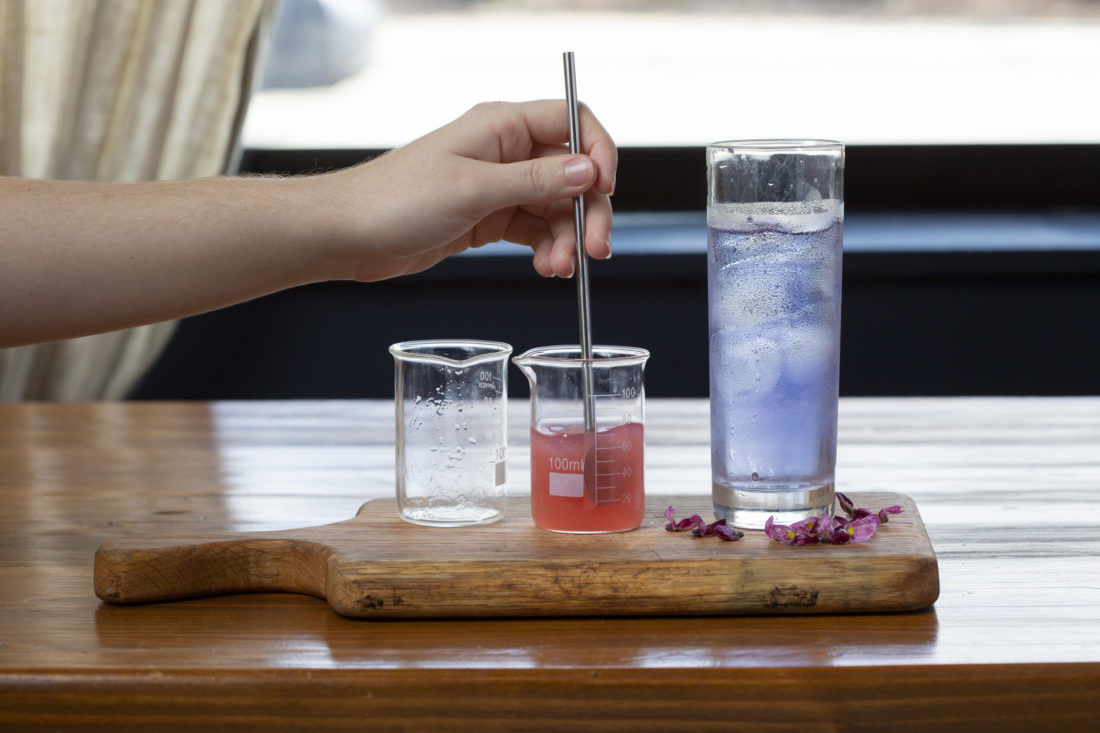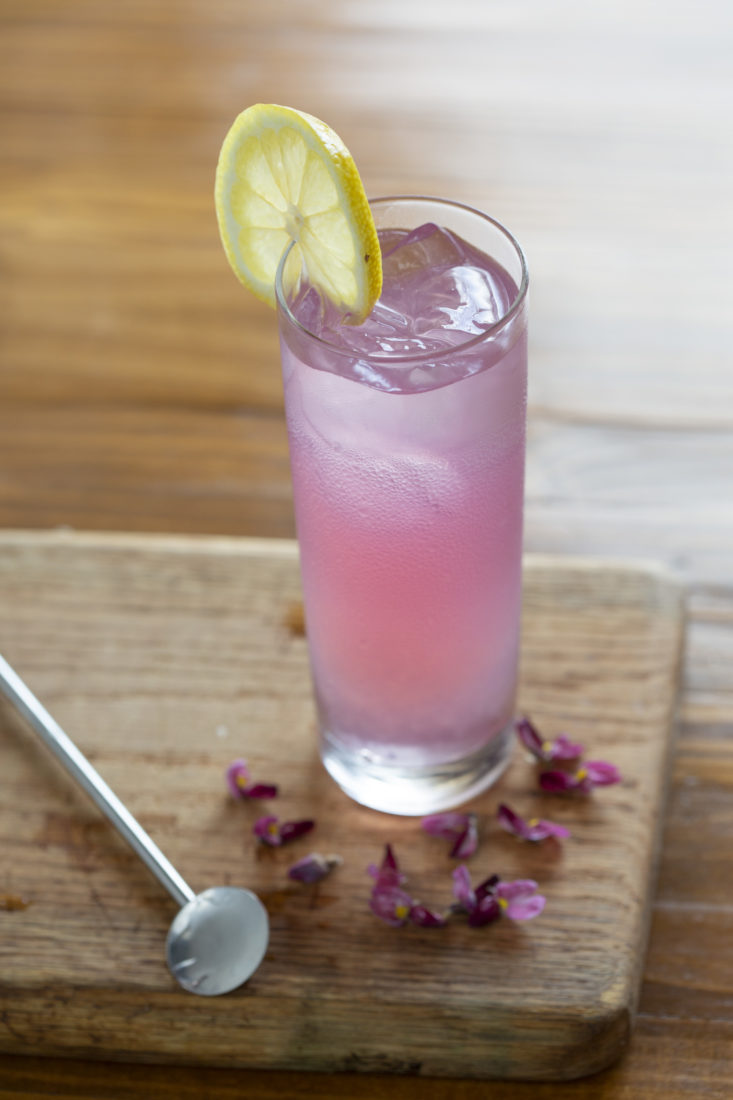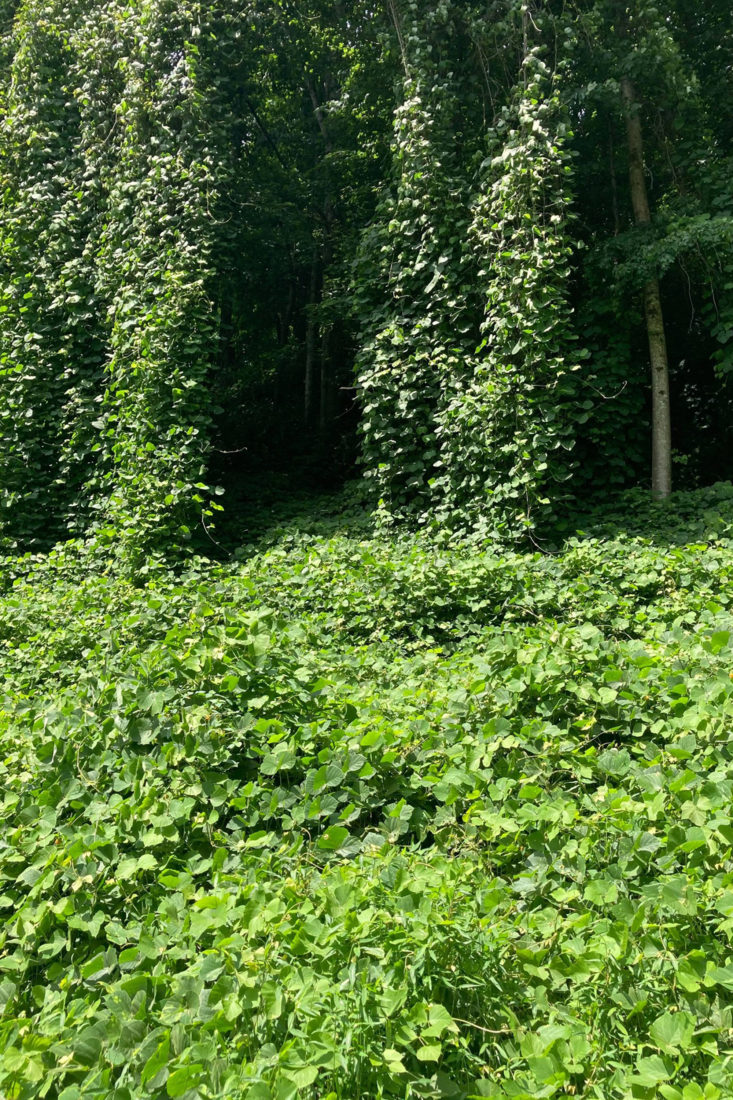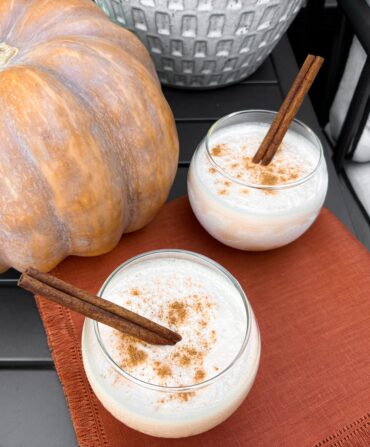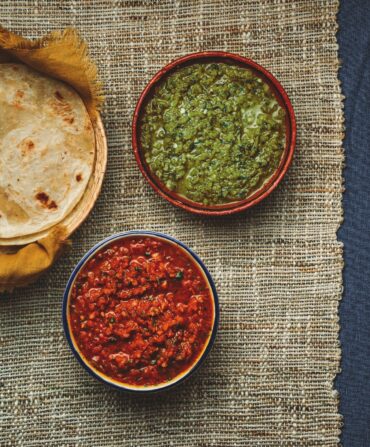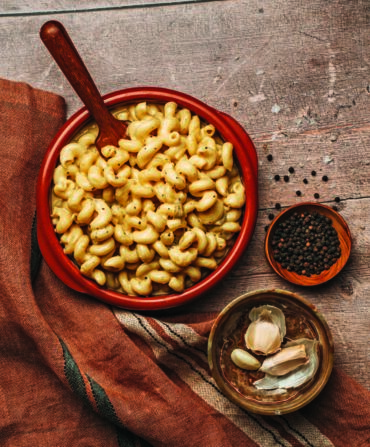Southerners have long had a thorny relationship with kudzu. Despite being an omnipresent emblem of bucolic life, the invasive species covers trees, fields, barns, and an entire theme park in Japan, choking everything beneath it. The Athens, Georgia, chef Mimi Maumus puts it poetically: “It’s killing everything so beautifully.”
The owner and creative force behind the seasonal bistro home.made and a new spinoff, Sidecar, Maumus has long loved experimenting with foraged ingredients. “When I was re-landscaping my yard, the woman I was working with was laughing at me because I kept asking, can you eat that? Can you eat that?” Maumus says. “There is so much growing around us. The birds know what you can eat, but we don’t.” Kudzu has recently become one of her favorite test subjects.
As it turns out, people have been cooking with kudzu for centuries. “It’s from China originally, but a few hundred years ago it went over to Japan,” says Lauren “LB” Bacchus, the executive director of Kudzu Culture, an Asheville, North Carolina–based nonprofit that seeks to awaken people to the benefits of kudzu. “So much fiber and cloth are made from it there. It’s also used in medicine, plus there have been culinary applications in Japan for hundreds of years.”
In America, though, the vine is a little bit newer, and a little less understood. And surprisingly, its introduction to the South was intentional. In the 1940s and 1950s, the government paid Southern farmers to plant kudzu in order to combat erosion (and prevent another Dust Bowl) as well as provide cheap fodder for livestock. “Now in the South, we have an almost-hundred-year-old, untouched crop, and there’s already an existing global supply chain. We want to empower people to use it,” Bacchus says. “Of course, it’s important to eradicate it where it’s negatively affecting species, but on monocropped farmland that’s been taken over by kudzu, you can harness it like a cash crop.”
For inspiration, just look to the 1977 Book of Kudzu, the seminal English language text on the subject. It touches on ancient and modern applications, flitting between the plant’s perception in Asia and America, and opens with a poem by the Georgia writer James Dickey. (“Japan invades. Far Eastern vines. / Run from the clay banks they are / Supposed to keep from eroding” go the opening lines.) “This information has been known for thousands of years, and people have had a relationship with it for a very long time,” Bacchus says. “The only thing that’s new is that we need to learn about it.”
The culinary uses alone are plentiful. While you can’t eat the seed pods or the vines themselves (although some artisans dry the vines for weaving), there are three main parts of a kudzu plant worth experimenting with in the kitchen.
The root
Although the roots can be roasted like a root vegetable, kudzu starch (or kuzu), taken from the thick taproots, is the plant’s most valuable product. “That’s kudzu’s magic,” Bacchus says. Often used as a gluten-free, dairy-free thickener (Sean Brock uses it in most of the soups he makes at his Nashville spot Audrey), it can also add an extra crunch to the breading of fried food, act as a binding agent in pies and other desserts, or be made into tamales or infused into teas. Currently, importing the starch from Asia is expensive, but Bacchus and her team are trying to scale up operations to make and sell locally harvested kudzu starch to chefs throughout the South and beyond.
The leaves
Perhaps the most recognizable part of the plant, kudzu leaves can—if cooked properly—make for a good side dish. “With the leaves, you have to be picky about which ones you work with,” Maumus says. “The bigger, older leaves are really fuzzy and fibrous, and they do not cook down, no matter what you do.” Opt for smaller, younger leaves—“they are not hard to find,” she says, as the vine grows about a foot a day. While the Book of Kudzu says you can sauté, steam, boil, or deep-fry them, Maumus recommends seasoning and baking the leaves like kale chips on a silicone baking mat at 375 degrees for 15 minutes. “They’re not as meaty as kale, but they have a nice roasty, crispy, salty flavor.”
The flower
Kudzu blossoms, the soft purple flowers that sprout up at the end of the summer, are perhaps the most fun part of the plant to play with. “The kudzu flower has a very distinct, overwhelming grape Kool-Aid smell,” Maumus says. About a decade ago, she noticed the flowers blooming atop piles of kudzu across the street from her yard and decided to do some more research (“because my mom taught me not to just eat anything I found in the yard,” she adds.)
As it turns out, the blooms make great grape-like jams and jellies, which Maumus has used as a base for crème brûlées and alongside other offerings. But her favorite way to incorporate them is in cocktails. “They require soaking, and there can be a lot of kudzu beetles you have to deal with, but they make a really good simple syrup,” she says. That simple syrup, though, doesn’t have the same striking fuchsia hue as the blossoms. Maumus’s ingenious solution: Add acid. “I felt like a mad scientist,” she says. “I ran around the restaurant and gave people lemons to squeeze into the syrup. It was so exciting to watch it change colors.” If you go to Sidecar, order the Electric Lemonade—guests get to mix the ingredients at their table to watch the liquids react before their eyes. Or get your hands on some kudzu blossoms (which typically bloom from July to late September) to make it yourself.
